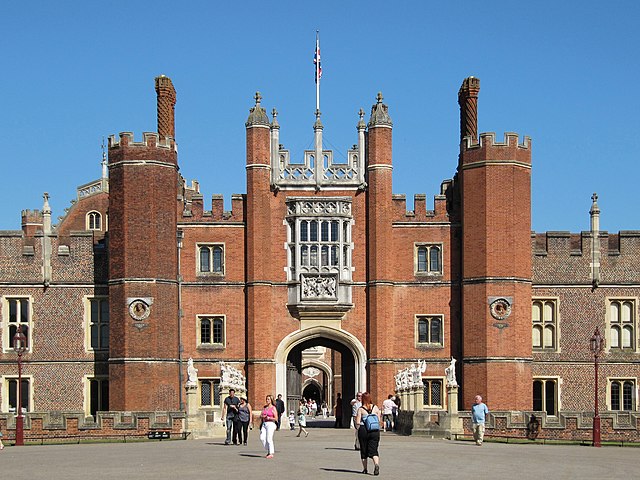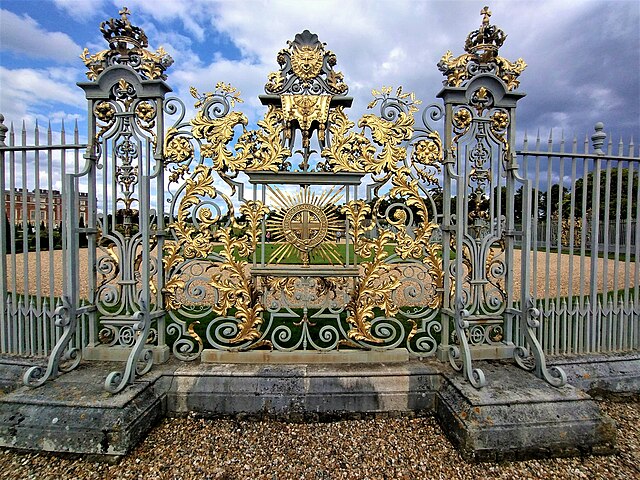Hampton Court Park, also known as Home Park, is a walled royal park managed by the Historic Royal Palaces. The park lies between the gardens of Hampton Court Palace and Kingston upon Thames and Surbiton in south west London, England, mostly within the post town of East Molesey, but with its eastern extremity within the post town of Kingston. In 2014, part of the park was designated a biological Site of Special Scientific Interest. It takes up most of the final (lowest) meander of the non-tidal reaches of the River Thames and is mainly divided between a golf course, meadows interspersed with trees used for deer, seasonal horse grazing and wildlife. A corner of the park is used annually for the Hampton Court Flower Show and the part nearest to the palace has the Long Water — an early set of hydro-engineered ponds or lakes, fed by water from the distant River Colne, as are the bodies of water in the neighbouring park, Bushy Park.
Hampton Court Park
Hampton Court, from the park
The Mediaeval Oak – said to be 750 years old
Hampton Court Palace is a Grade I listed royal palace in the London Borough of Richmond upon Thames, 12 miles southwest and upstream of central London on the River Thames. Opened to the public, the palace is managed by Historic Royal Palaces, a charity set up to preserve several unoccupied royal properties.
The Tudor Great Gatehouse
Hampton Court Palace, with marked reference points referred to on this page. A: West Front & Main Entrance; B: Base Court; C: Clock Tower; D: Clock Court, E: Fountain Court; F: East Front; G: South Front; H: Banqueting House; J: Great Hall; K: River Thames; L: Pond Gardens; M: East Gardens; O: Cardinal Wolsey's Rooms; P: Chapel.
Decorative Tudor brick chimneys at Hampton Court Palace
Thames riverside gate, now closed. August 2023.







